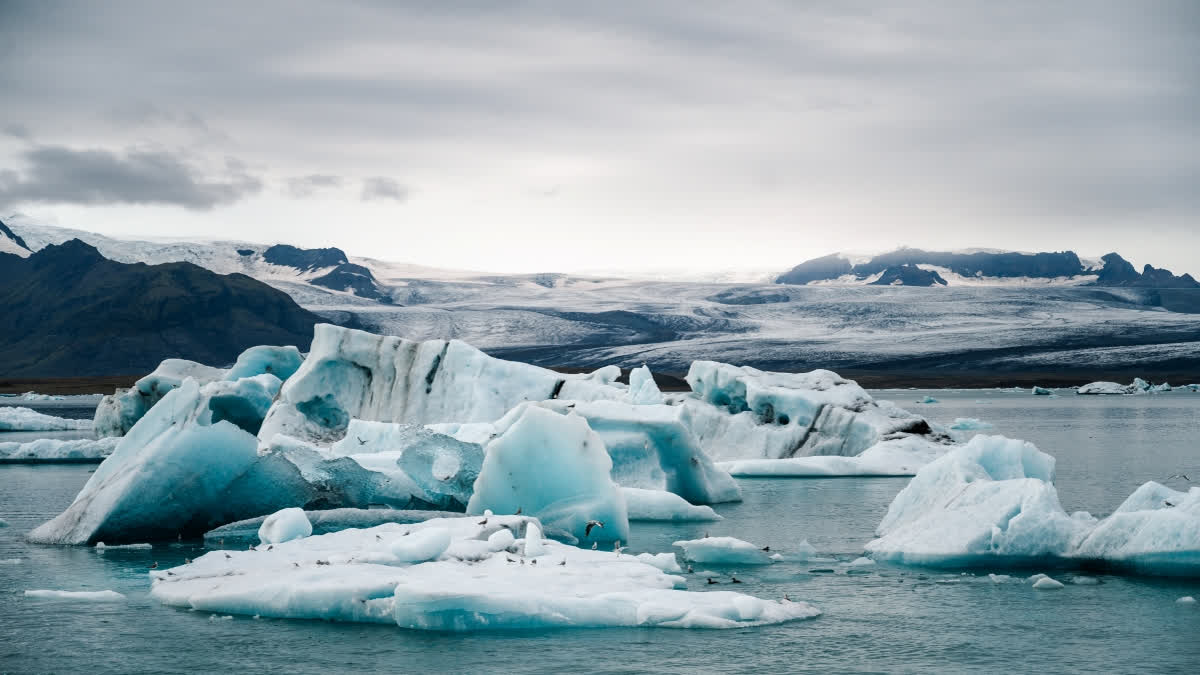Brighton (England): Late in the evening of April 14, 1912, the RMS Titanic collided with an iceberg in the north-west Atlantic. In just over two and a half hours, the Titanic sank, claiming the lives of 1,514 people. The Titanic disaster is one good reason to understand icebergs better. But their significance extends far beyond posing a risk to ships and other offshore structures. Icebergs are crucial to monitor because of their profound impact on the natural world and human societies.
Icebergs are formed when chunks of ice break off from the front of glaciers and floating ice shelves. They exist in a range of sizes, from small formations known as growlers and bergy bits (that extend up to 5 metres above sea level), to larger icebergs aptly referred to as giants. In 2000, one of Antarctica's largest icebergs, called B-15, had a surface area roughly the same size as Jamaica. Since then, B-15 has fractured into a number of smaller pieces and most have melted away.
Icebergs that break off from an already floating ice shelf do not displace ocean water when they melt, just as melting ice cubes do not raise the liquid level in a glass. But when an ice shelf collapses, it no longer holds back inland glacial ice. This inland ice will then move faster and can rapidly release new icebergs, which displace ocean water and contribute to sea level rise.
In 2022, Antarctica's Conger ice shelf collapsed. Some of the continent's other large ice shelves are also thought to be at risk of collapse in the future, particularly those around the unstable West Antarctic ice sheet. The collapse of the West Antarctic ice sheet alone could raise the global sea level by 3.2 metres. Global warming accelerates not only iceberg release, but also the rate at which icebergs melt. As icebergs melt, they release freshwater to the ocean.
In the northern hemisphere, a surplus of freshwater from the Greenland ice sheet in the future has the potential to weaken or even shut down the North Atlantic Conveyor pump, which circulates warm tropical waters northwards. If the North Atlantic Conveyor pump is significantly affected, the northern hemisphere could be plunged into sub-zero, glacial conditions.
Also read; Even 'safe' air pollution levels can alter kids brain function: Study
Scouring' the seabed: Icebergs are often thought of as floating masses of ice. Yet their undersides regularly come into contact with the seabed, gouging out sediment on the seafloor to form scour marks. Some 1520 per cent of the world's oceans are affected by this phenomenon. Research that I co-authored in 2016 on iceberg scouring in East Greenland, found that icebergs can disturb sediment up to several metres below the seabed. This disturbance poses a risk to offshore marine structures such as buried pipelines and telecommunication cables.
Icebergs can also crush plants and animals when they collide with the seabed. These organisms, such as seagrasses and molluscs, are important stores of carbon in polar regions. In areas of West Antarctica, referred to as iceberg killing fields, iceberg scouring may recycle around 80,000 tonnes of carbon back into the atmosphere each year.
Ocean fertilisers (and polluters): But it's not all bad news. Some icebergs contain substantial amounts of iron-rich sediment, known as dirty ice. These icebergs fertilise the ocean by supplying important nutrients to marine organisms such as phytoplankton. Following the passage of an iceberg, there is an increase in organism growth and levels of chlorophyll (the green pigment in plants used for photosynthesis) in the surrounding water. This can result in vibrant blooms that extract CO2 from the atmosphere as they grow.
One study on icebergs in the Southern Ocean found that these blooms can be up to ten times the length of the iceberg and can persist for more than a month. Blooms in the wake of icebergs off Antarctica have the capacity to absorb up to 40 million tonnes of carbon each year. But icebergs hold more than just nutrients in their icy structures. Glacier ice may harbour ancient bacterial and viral microbes, even including buried faecal microorganisms.
These microbes will eventually emerge at the glacier's surface or in icebergs where they will enter natural ecosystems and could pose a threat to human health. Research has also identified various other contaminants within glaciers. These include soot, nuclear fallout, potentially toxic elements such as arsenic, mercury and lead, nitrogen-based contaminants such as fertilisers and animal waste, microplastics and persistent organic pollutants such as pesticides and solvents.
Scientists are, however, exploring the possibility of towing icebergs to water-scarce regions. An iceberg holding 20 billion gallons of freshwater could potentially meet the water needs of a million people for five years provided that the water is uncontaminated. Icebergs have an impact on our oceans, atmosphere and societies. As the climate emergency intensifies and our glaciers and ice sheets continue to recede, the significance of icebergs will only grow, for better or worse. (PTI)



